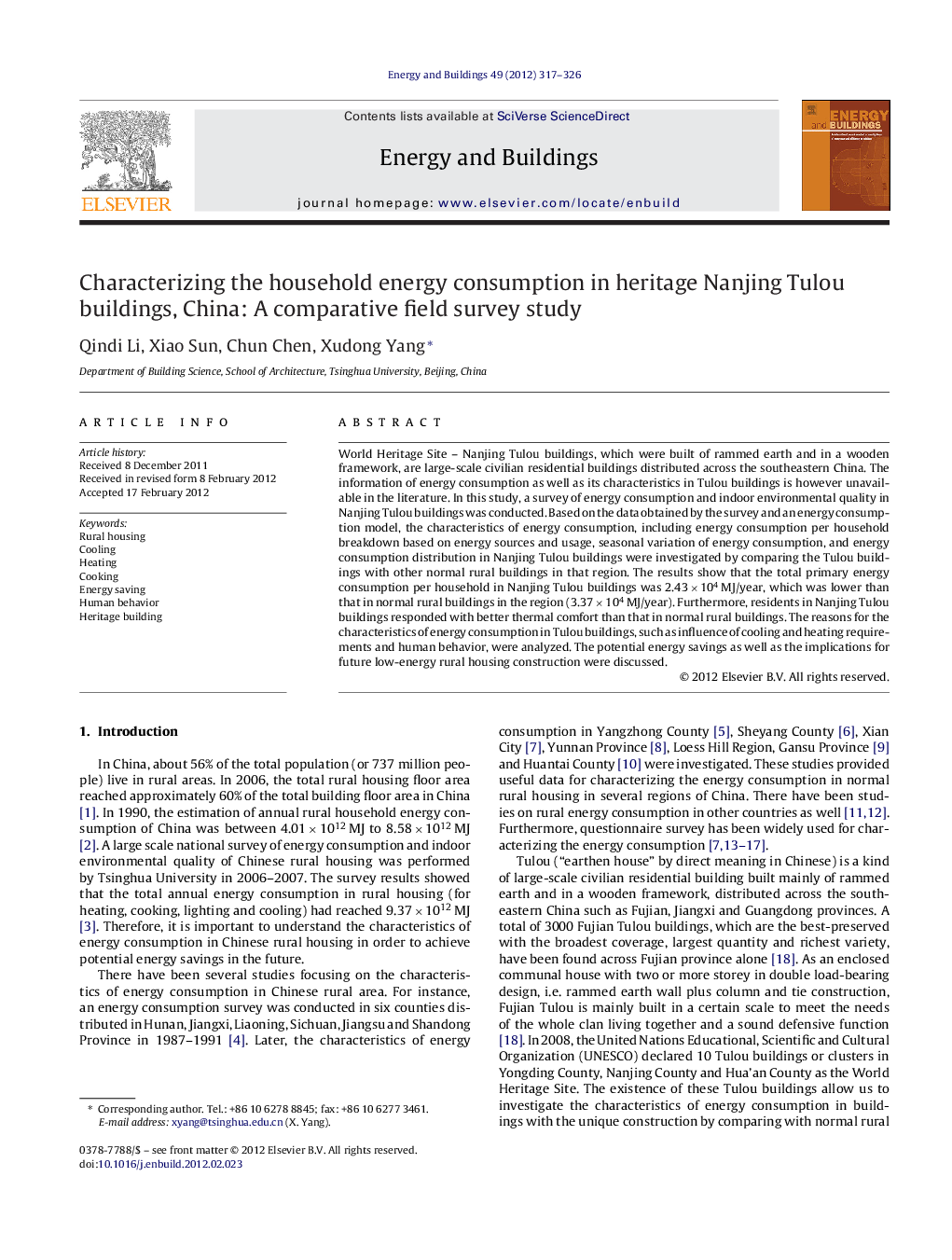| Article ID | Journal | Published Year | Pages | File Type |
|---|---|---|---|---|
| 263936 | Energy and Buildings | 2012 | 10 Pages |
World Heritage Site – Nanjing Tulou buildings, which were built of rammed earth and in a wooden framework, are large-scale civilian residential buildings distributed across the southeastern China. The information of energy consumption as well as its characteristics in Tulou buildings is however unavailable in the literature. In this study, a survey of energy consumption and indoor environmental quality in Nanjing Tulou buildings was conducted. Based on the data obtained by the survey and an energy consumption model, the characteristics of energy consumption, including energy consumption per household breakdown based on energy sources and usage, seasonal variation of energy consumption, and energy consumption distribution in Nanjing Tulou buildings were investigated by comparing the Tulou buildings with other normal rural buildings in that region. The results show that the total primary energy consumption per household in Nanjing Tulou buildings was 2.43 × 104 MJ/year, which was lower than that in normal rural buildings in the region (3.37 × 104 MJ/year). Furthermore, residents in Nanjing Tulou buildings responded with better thermal comfort than that in normal rural buildings. The reasons for the characteristics of energy consumption in Tulou buildings, such as influence of cooling and heating requirements and human behavior, were analyzed. The potential energy savings as well as the implications for future low-energy rural housing construction were discussed.
► A survey of energy consumption was conducted in heritage Nanjing Tulou buildings. ► With unique construction, Tulou resulted better comfort with less energy use. ► Results would have great significance for future energy savings in Chinese rural area.
